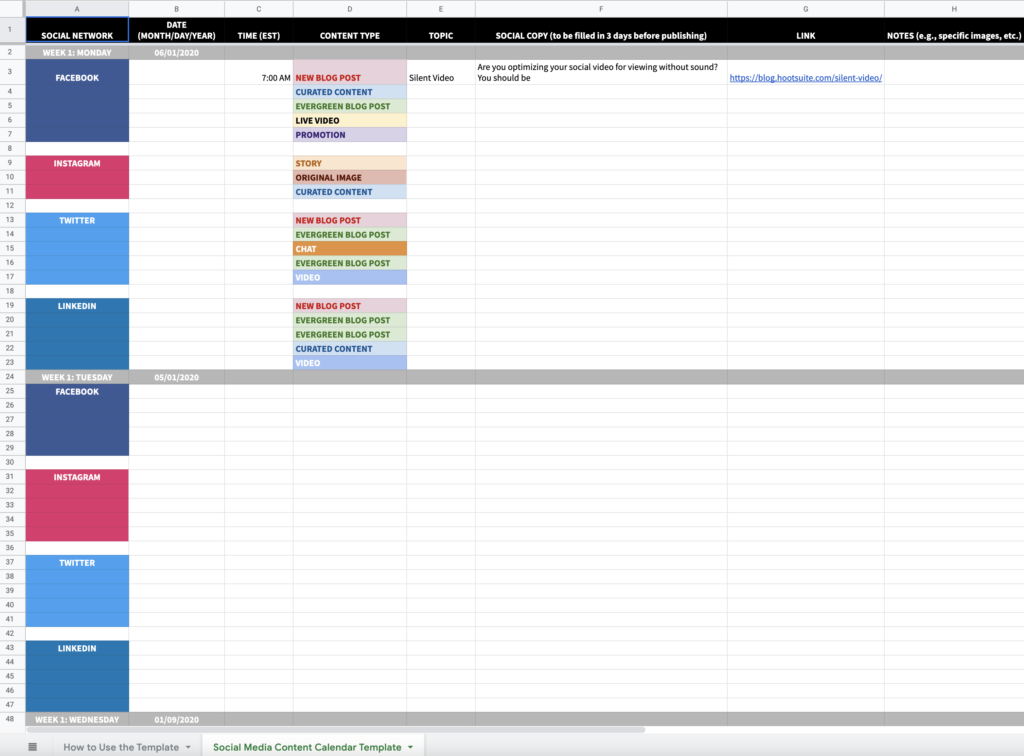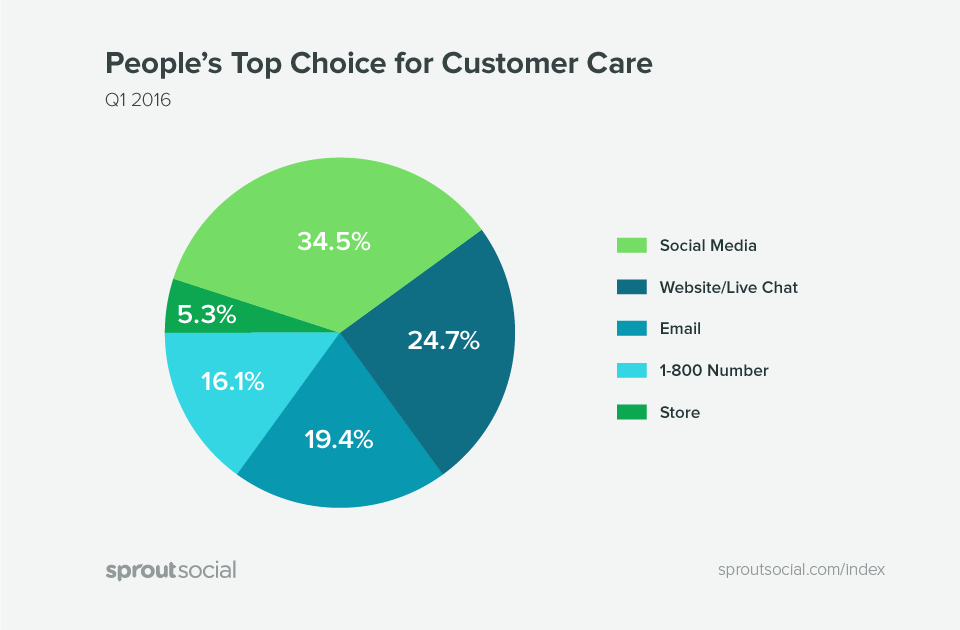Social media has changed our lives. It’s impossible to imagine what the world would look like without it. This new way of socializing has introduced humanity to a new, convenient way to communicate with each other.
You can talk to your friends, meet new people, read up on the latest news, and even make money; all while sitting comfortably behind your computer screen. However, doing it right and actually getting results can get a little overwhelming at times. But don’t despair. We’ve got your back!

It takes a lot of time, effort, and dedication to get to the top of this extremely competitive world. But if you think you’ve got what it takes to become a professional social media manager, then here are some social media tips on how to juggle multiple social profiles easily and effectively.
Key takeaways
- Make sure every one of your social media accounts is secure from hackers.
- Spend time planning a fool-proof social media strategy.
- It’s okay to rely on tools for help! Sometimes it’s almost impossible to function without them.
- Analytics should be your best friend.
- Don’t feel bad for repurposing or curating
- Using templates will make your life easier
- Make sure you’re engaging
1. Secure your social media accounts
Losing your Facebook page is bad. Losing your Twitter account, LinkedIn account, Google account, and Tumblr account shortly after is even worse. Just because it hasn’t happened to you yet doesn’t mean you can neglect the security of your social platforms.
The rules are very simple:
- Use different passwords for every account you have (check out 1password for a cool tool to help with this);
- Use lower- and higher-case letters as well as numbers in your passwords;
- Don’t give your passwords out to people you don’t trust;
- Change your passwords at least once a year.
Yes, it’s a headache (but not if you use a password manager like 1passwords mentioned above). But in this case, it’s better to be safe than sorry, especially once you’ve used your social media management skills to set up a small business. These simple precautions can save your life. In fact, they probably have already without you noticing.

Unfortunately, following the security guidelines still doesn’t guarantee your account won’t fall into the hands of hackers. Website databases are breached more frequently than you think, leaking all the logins and passwords to the public. Keep an eye out for recent breaches to find out if your security has been compromised, and always keep a backup way to restore the ownership of your account in case you’re hacked.
Most platforms offer different levels of security. No one really wants to confirm their login via their phone every time they want to have a chat with their followers. However, if you’re responsible for your company’s social media management, maybe it’s worth enduring a slight inconvenience to afford yourself the peace of mind that you won’t be responsible for your company getting hacked.

Compared to regular users, people with popular accounts present a way juicier target. So you have to be extra careful when it comes to your online activity. It only takes one careless click on a link from a random message you’ve received, and your account is gone, or at the very least could have some prankster posting random content to your followers that you certainly wouldn’t have approved – yikes, embarrassing!
The more barriers you can place between hackers and your accounts – the better.
2. Fail to prepare, prepare to…
FAIL! Yes, planning your social media strategy ahead of time is a very important part, an imperative aspect of being successful on social these days. You have to be consistent, which means lots of content, and lots of content means you need to prep.
You can wing it for some time. But if life starts getting in the way (you get flu, Alex from the design department keeps distracting you, you’re constantly called into meetings, etc.) you’ll need a backup plan to keep things ticking along without you at the helm.

If your budget allows it, and you have marketing minions, then your team members can handle some of that stuff for you. But otherwise, you should make sure you’re placing your trust in some solid forms of social media management automation.
Develop a posting schedule that covers you for the next few weeks. A content calendar will help you to stay on track. You need to tie your social posts in with your overall marketing strategy and ensure your updates are relevant, high quality, and, most of all, being posted at optimal times.

Automate as much of the work as you can so that you can concentrate on other things when you need to. Managing multiple social profiles can be really stressful if you don’t plan ahead and schedule content. So, do yourself a big favor and check out these articles with more tips and tools you might find useful (also more to come in the next section below):
How to Find Content for Social Media – The Busy Person’s Guide
The 2020 Social Media Automation Guide – Work Smarter, Not Harder
Programs like IFTTT can also take a lot of work off your hands. It’s definitely worth your time to learn how to use it. Once you become semi-proficient with it, you’ll feel a huge workload reduction. Schedule your content in an easy and comfortable way using simple social media schedulers like SocialBee.
3. Social media management tools
There is a myriad of helpful social media management tools that will make it way more comfortable to maintain your social network presence. The functionality varies greatly, but mixing a couple of programs up can get you just the thing you need.
This recent post from the Quuu blog can introduce you to just a few of the top products you might want to add to your roster of ‘go-to’ tools.

Some of the best social media management software include Buffer, ContentCal, SproutSocial, Zapier, Tailwind, and, of course, Quuu. Every major social media marketing specialist uses at least one of these.
These give you a huge advantage. By allowing you to get all the information you need to manage it from one place, it means you no longer have to jump between your social media profiles. There’ll be no more chasing your tail.
Mentions, tweets, hashtags, posts, RSS feeds – all the information you have to monitor can get overwhelming. Being able to organize all that mess into a neat suite of select tools is priceless, trust us.
4. Analytics FTW!
Let’s talk about stats. You’ll be in one of two camps over this, you’ll either love them, or you’ll hate them.
Either way, the numbers can hold the key to your future success in achieving social media growth. The information you gather and analyze can answer many of your questions about your social media content and your follower behavior, allowing you to identify useful trends.

However, sometimes making sense of these stats can be overwhelming, especially when you’re managing multiple accounts. So the real key to this is placing your trust in, yes, you guessed, more snazzy software.
Here are a few tried and trusted SaaS apps that are bound to help you master your data and leverage that knowledge to become a social media Druid:
- Keyhole: Specializing in hashtag tracking, covers all platforms and provides simple-to-understand reports.
- Quintly: Compare your brand’s performance against that of your competitors, using over 350 metrics to track your efforts on social.
- Brand24: More focused on staying abreast of what people are saying about your brand, providing reports and analytics to make you feel like the all-seeing eye of social media.
All these reports will help you optimize the way you use your multiple social media accounts and save you hours of time.
5. Curating and reposting ain’t cheating
No one can expect you to constantly offer high-quality, user-generated content across all your social media accounts. This is where content curation becomes your best friend. It’s the ultimate time-saver.
Your marketing efforts should always include integration of original content and curated content. Not only does this keep your audience engaged, but it also lets you leverage your competitor’s audience.
For example, if a competitor has uploaded a viral TikTok, share it on your Twitter and offer an opinion. Check out our previous article that explains everything you need to know about content curation on social media. Curation varies the types of content you’re sharing. which is always a bonus for your followers.

Repurposing your content is also a great way to take off the load and make managing multiple social media accounts that little bit easier. Hootsuite goes as far as to say that a whopping ⅓ of your content should either be curated or reposted.
If a particular Instagram post attracted a ton of engagement, tweet about it! You can find out which social media posts have performed the best amongst your followers and then repurpose the topic or the post for different social media platforms.
For example, maybe you posted an Infographic of a step-by-step breakdown of buying a house for the first time. It got a great amount of attention, and your target audience loved it. So, repurpose it! Take the topic and make an informative video about it to post on YouTube, TikTok, or Instagram Reels. You’re giving the followers what they want while taking the stress of creating content ideas off you. It’s a win-win!
6. Use templates to de-stress your workflow
By incorporating templates into your marketing plan, you can half the time spent on each post. This means having a set layout for different kinds of posts.
From Instagram stories to infographic images, if you have a go-to structure already set up with your logo, font choice, and color scheme, it’ll create a coherent brand identity. This will subsequently improve brand awareness within the company and your followers.

If you imagine the most successful social media accounts, you’ll be able to recognize the account from their posts alone. This is because they all use templates to ensure a professional and recognizable social media presence.
Benefits of templates:
- Decreases the time spent on each post
- Creates a strong brand identity
- Can work across multiple platforms
- Makes it easier to schedule posts
- Multiple social media tools have plenty of templates free to use and personalize
- Creates brand awareness within a company and among social media users
7. Make time to engage
You may already be following all our previous tips and your digital marketing still isn’t as successful on certain accounts as it is on others. This may be down to your engagement, and this time we aren’t talking about the engagement of your followers. If you are not creating an active social media presence and engaging with the accounts you follow, you are not accessing wider and different audiences.

Now, when you are managing multiple social media accounts this can be incredibly time-consuming. But if you set aside just 15 minutes per week per account, this can make a huge difference. Use the mobile apps and like, comment, follow and share accounts and posts that are relevant to your company and the demographic you are trying to reach.
It’s also vital that your response time to DMs and tweets is quick. You want your followers to see a real interactive community behind the account, not just a branded selling machine. If you can offer meaningful and informative responses to potential clients, it’ll build trust in your brand.
Although it’s virtually impossible to understand social media algorithms, we know that engagement plays a huge role. So it’s worth getting it right.
Conclusion
While it looks like a dream job, social media management can be stressful if it’s done manually and without a plan. Most people maintain their social media channels for fun. They talk to their friends, post stories or pictures, and look for inspiration or the latest news.
It’s a sort of psychological outlet and a hobby. But when you make it your primary job, your favorite activity can turn into a nightmare pretty quickly.
If you’re an experienced social media manager and you’d like to share some tips, pop them in the comments below for our readers. We’d love to learn more about you and what you’ve found works best!





